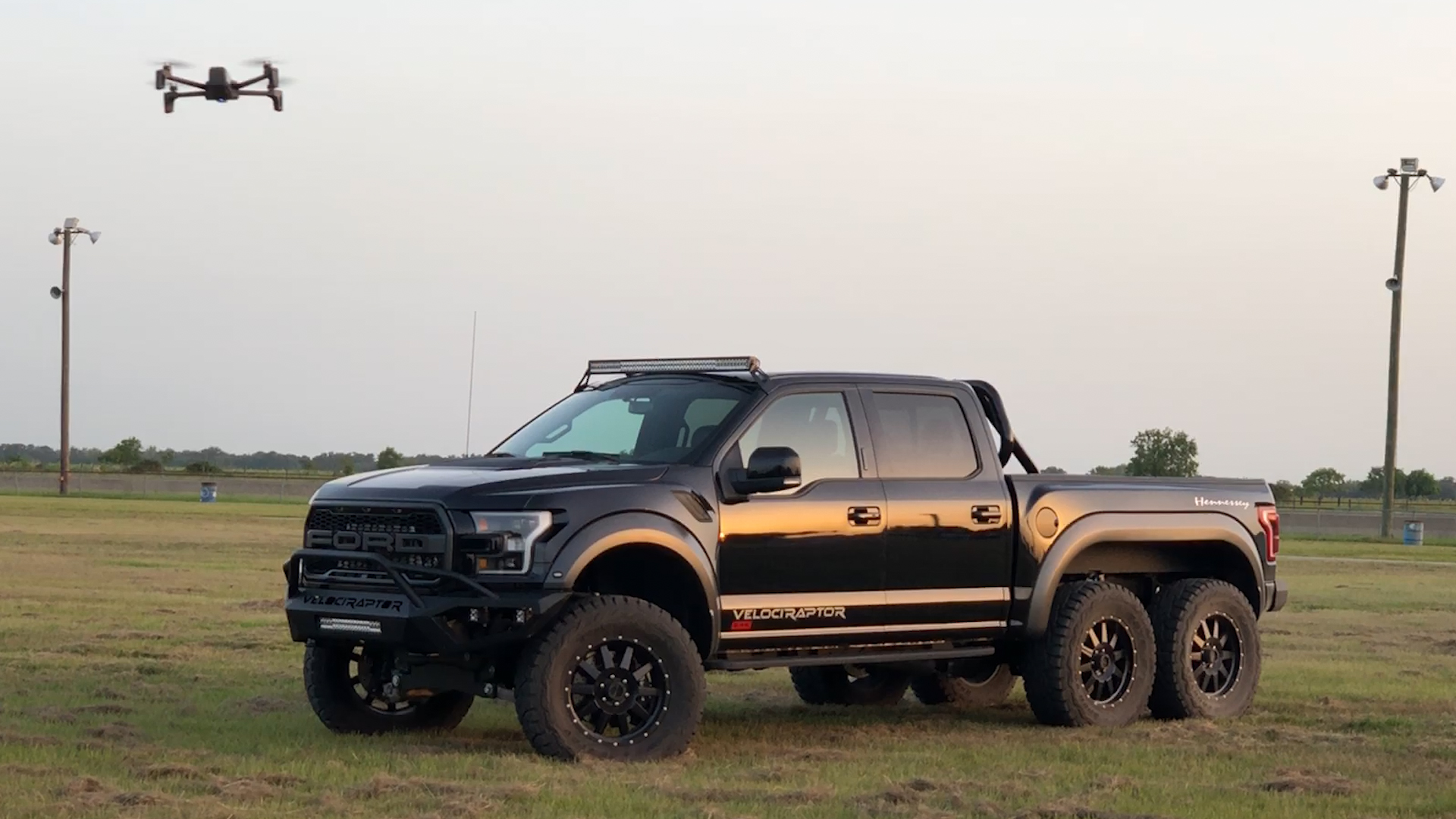

The Parrot Anafi, By the Numbers
Price: $699
Range: 2.5 Miles (Unobstructed)
Camera Specs: 4K UHD 24/25/30fps, Max video bitrate: 100 Mbps
Top Speed: 33mph
Flight Time: 25 Minutes
Size Unfolded (Folded): 6.9×9.4×2.5in (9.6×2.6×2.5in)
Quick Take: $100 cheaper than a DJI Mavic Air, this extremely capable drone nearly matches its top competitor while saving you money.

One Big Question: Is the Parrot Anafi the best portable filming drone?
Five years ago if we were to tell you that there’s a camera that can fly, create automated cinematic shots, shoot in 4K at 100 mbps, and fold up to fit in a backpack or long pocket, how much do you think it would cost? Would you even believe it existed? In 2013, GoPro released the first compact 4K camera with the Hero 3+, which rang in at about $500. It also didn’t fly. Today, for just a little more cash, you can swing either the Parrot Anafi ($699) and the DJI Mavic Air ($799) and get yourself a filming drone with a 4K camera that can shoot at double the bitrate of that first GoPro. We set out to see how the Parrot stands up to the DJI—arguably the biggest name in consumer drones right now—for a hundred bucks less.
Parrot Anafi: The Pros
- We buy cameras to capture life in detail. The Parrot Anafi can shoot 4K at 100 mbps; the higher the bitrate, the more detail you get, and 100mbps is very good for a compact camera (most shoot at 50mbps). The footage that comes from the Anafi is stunning. Cars (our subject of choice, naturally) come out in glorious 4K detail—all the better for pixel peepers to drool over.
- Low angle shots are a must in the car world, making vehicles look larger than life. A Dodge Demon looks angrier from a lower angle, and previously most drones weren’t capable of shooting upwards because the camera was physically under the body of the drone. But the Anafi has a front-mounted camera, which allows it to tilt up and down 180 degrees and provide a new and much-needed perspective from a drone. The DJI Mavic Air isn’t capable of shooting upwards because of the camera placement, and Anafi has a clear win here.
- When dealing with cars that are loud, or in shops that are louder, people don’t really mind the buzzing of a drone. We as car people are also generally noisy. But that’s not true for everyone, and thankfully the Parrot Anafi is the quietest drone we’ve tested, creating much less noise than the Mavic Air.
- The Anafi folds its arms forwards which makes it longer and thinner than the competition when it comes to storage. Space is everything when traveling for a shoot, and every piece of equipment takes up precious real estate. In our experience, it’s easier to fit an extra item into a crowded camera bag if it’s long and thin, as opposed to something that is shorter and wider.
- Our main shooting drone for big productions is a DJI Inspire 2, which is large and heavy, requiring its own special case that’s larger than a carry-on suitcase. Since the Anafi is only 11.3 oz, our video team complains much less about carrying a drone around.
- We also have to deal with a lot of cables in this business, and it seems like each high-end product takes its own proprietary charger or connection to the computer. It was a geeky thrill to see that the Anafi charges from a plain old USB-C cord that can plug into a laptop. Talk about convenience.

Parrot Anafi: The Cons
- We buy filming drones to capture cinematic, stable shots from the air. If we left the Anafi hovering in place for a stable shot and didn’t use any stick inputs, there was a slight wiggle as if it was trying to find its balance. This isn’t apparent when shooting from far distances, but it became more noticeable the closer we moved toward a subject—often the case with cars. It wasn’t a total dealbreaker because the wiggle went away as soon as we started to move in any direction, and most drone shots involve some type of movement. But it was something we had to work around.
- We flew the Anafi during a recent shoot at Hennessey Performance in Texas on a day with winds of around 10 mph, which the camera would succumb to occasionally and produce bumpy footage. The Parrot Anafi literature says it can handle up to 35mph winds—that might be technically true for general flight, but I would be hesitant to say that you could get any usable footage in that kind of weather. Flying in relatively light winds, you could clearly see where the drone was fighting to stay balanced when things picked up, and then smooth out again.
The Bottom Line
The Parrot Anafi is a winner for The Drive’s video team and has become our go-to drone for smaller, remote productions. Its crisp resolution, flight time, noise level, and portability all make it a really great piece of kit to work with. It takes no time to set up and start filming, which is crucial for the limited time we have on location during shoots. It’s $100 cheaper than the DJI Mavic Air and almost as capable, and we feel confident that most hobbyists would be more than satisfied with the Anafi. The DJI Mavic Air is an incredible drone, sure, and it’s a little more stable—but it’s also louder, and it can’t shoot at an upward angle. For the money, there is no single piece of equipment that checks as many boxes as the Parrot Anafi.